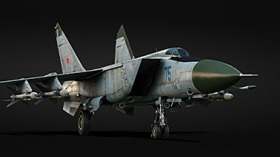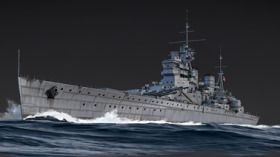
- For PC
- For MAC
- For Linux
- OS: Windows 10 (64 bit)
- Processor: Dual-Core 2.2 GHz
- Memory: 4GB
- Video Card: DirectX 11 level video card: AMD Radeon 77XX / NVIDIA GeForce GTX 660. The minimum supported resolution for the game is 720p.
- Network: Broadband Internet connection
- Hard Drive: 22.1 GB (Minimal client)
- OS: Windows 10/11 (64 bit)
- Processor: Intel Core i5 or Ryzen 5 3600 and better
- Memory: 16 GB and more
- Video Card: DirectX 11 level video card or higher and drivers: Nvidia GeForce 1060 and higher, Radeon RX 570 and higher
- Network: Broadband Internet connection
- Hard Drive: 62.2 GB (Full client)
- OS: Mac OS Big Sur 11.0 or newer
- Processor: Core i5, minimum 2.2GHz (Intel Xeon is not supported)
- Memory: 6 GB
- Video Card: Intel Iris Pro 5200 (Mac), or analog from AMD/Nvidia for Mac. Minimum supported resolution for the game is 720p with Metal support.
- Network: Broadband Internet connection
- Hard Drive: 22.1 GB (Minimal client)
- OS: Mac OS Big Sur 11.0 or newer
- Processor: Core i7 (Intel Xeon is not supported)
- Memory: 8 GB
- Video Card: Radeon Vega II or higher with Metal support.
- Network: Broadband Internet connection
- Hard Drive: 62.2 GB (Full client)
- OS: Most modern 64bit Linux distributions
- Processor: Dual-Core 2.4 GHz
- Memory: 4 GB
- Video Card: NVIDIA 660 with latest proprietary drivers (not older than 6 months) / similar AMD with latest proprietary drivers (not older than 6 months; the minimum supported resolution for the game is 720p) with Vulkan support.
- Network: Broadband Internet connection
- Hard Drive: 22.1 GB (Minimal client)
- OS: Ubuntu 20.04 64bit
- Processor: Intel Core i7
- Memory: 16 GB
- Video Card: NVIDIA 1060 with latest proprietary drivers (not older than 6 months) / similar AMD (Radeon RX 570) with latest proprietary drivers (not older than 6 months) with Vulkan support.
- Network: Broadband Internet connection
- Hard Drive: 62.2 GB (Full client)

We are continuing to develop and improve our approach to shell configuration. When working through the various phases of configuring the shells, we have based those on sources from their countries of origin as well as unified sources which provide data for multiple shells represented in the game, we decided to configure shells on the basis of formulas, which is, in our opinion, the best method for players to easily understand.
This method will make it possible to standardise the armour penetration system and avoid situations where documents from various countries provide different data on armour penetration for the same shell. It will allow us to configure shells much more effectively, yet no less realistically, even when certain data is unavailable.
We are constantly improving the armour penetration system in War Thunder, and right now, we can highlight two phases that have been expressed in its development, each of which is fair and correct in its own way.
The first phase involved the configuration of penetration based on data from documents and firing data for each weapon and type of ammunition. In this case, we prioritised sources from the countries of origin.
The second phase involved the switch to a “unified” system, the basis for which was numerical data from one source per country. This version allowed us, to a certain extent, to collate data from various sources and countries.
However, these phases were not able to unify the armour penetration system and make it comprehensible to players while preserving its documentary and technical basis. These configuration methods also facilitate a peculiar kind of “tug of war” in which various sources appear one after another, frequently with contradictory data. After performing a lengthy and detailed analysis, we decided to improve the current system and make it easier to understand. This is an important step in the never-ending process of improving ballistics and damage models.
You can find out more about shells and armour penetration in the War Thunder Wiki.
The DeMarr and Lanz-Odermatt Formulas
There have been some recent changes that you may have already noticed in the game. These include refinements to the ballistics parameters for high-calibre armour-piercing rounds. In order to do this, we used firing tables and other documents that allowed us to more accurately set falling speeds at range for these shells. For types of ammo for which there was, for whatever reason, no precise data, we used the parameters of shells from the tables with a similar design and characteristics. Having obtained more exact data on speed, we can reevaluate the penetration system using a formula-based calculation. We decided to use the DeMarr formula because it is the most accessible and comprehensible formula for high-calibre armour-piercing (AP/APC/APBC/APCBC) and sub-calibre (APCR/HVAP) shells. When it comes to sub-calibre fin-stabilised shells, we decided to use the Lanz-Odermatt formula. We are still working on APDS shells. Information about them will appear a bit later than the aforementioned ammo types.
One of the new features in the system for calculating armour penetration is that it will now take it into account if a shell contains a chamber full of explosives. The percentage of explosives contained within the shell will be factored into armour penetration indicators – the higher the ratio of explosives to the weight of the shell, the lower the armour penetration. This allows for the more accurate implementation of indicators for semi-armour-piercing and armour-piercing shells with a large quantity of explosives and a relatively slender body.
The implementation of this system for calculating armour penetration will occur in phases: we are planning to start by switching the more commonly-used ammo types. such as high-calibre armour-piercing and armour-piercing fin-stabilised shells, to this system. Then we’ll move on to sub-calibre shells (APCR/HVAP) and sub-calibre shells with a discarding sabot (APDS). There are certain challenges involved in calculating the latter, and it is possible that, for a certain portion of shells, the old armour penetration system will be preserved. These shells represent an insignificant portion of the shells available in game. One example would be the L15A3/A5, M728.
So how will this improve the game?

It will allow us to optimise the penetration system and unify it for all high-calibre (APCR/HVAP) shells. At the same time, it will allow us to avoid situations in which data from various sources and countries is contradictory, since these sources were managed by various systems and penetration methodologies. We believe that the new system will be more transparent and easier for players to understand without sacrificing realism (as an example, in the USSR’s firing tables the data on penetration follows the same DeMarr formula, as do the calculations in AaG). Yet another advantage will be the ability to immediately get penetration data for any high-calibre or sub-calibre (APCR/HVAP) armour-piercing shell for which there is information about its muzzle velocity, falling speed, and mass. For AP/APC/APBC/APCBC shells we have also recalculated the effect of incline – the effect whereby the thickness of the armour being penetrated drops as the incline increases (the slope effect) when performing formula-based calculations in order to achieve uniformity and eliminate certain inaccuracies in their current values. As you can see from the examples below, compared to the current values for an angle of incidence of 30 degrees, penetration ends up increasing, and for an angle of 60 degrees, on the contrary, it drops. According to our evaluations, the role of proper tank positioning, i.e. placing the tank correctly in relation to the weapon being fired, will increase. Using this chart you can familiarise yourself with the formula for calculating the slope effect for AP/APBC/APCBC shells and the resulting slope effect values.
APCR/HVAP and APDS shells will get updated slope effects that will make it possible to more accurately factor in the technical characteristics of a shell’s construction that influence the penetration process. For APCR/HVAP shells the indicators for speed reduction will be ascertained based on the example of how this was done for APHE and APDS shells. The new system is so simple and productive that, if you know a shell’s individual attributes, you can calculate its penetration using the DeMarr formula on your own.
Foreseeing questions about “historical accuracy” and correspondence with actual firing data, we should mention that the data used to calculate armour penetration figures are based on existing documents and is nothing out of the ordinary. Historical and technical accuracy will remain one of the key parts of the game, but the game environment cannot match reality exactly, so the values used for our calculations allow for a certain degree of conventionality.
The War Thunder Team




Comments (129)
What about the hardness of the material used to make up the shell. All kinds of different materials were made with varying degrees of hardness through out time.
The new system ignores that apparently.
I hoped to see them implement actual physical models of shells so that they would stop going through one pixel sized "weakpoints" many tanks have. Top tier would finally stop being a game of shooting each others' turret rings.
Funny you say that. Why cant I pen a T-80s turret ring at point blank with a sabot, but they can pen my frontal turret armor on my Abrams?
ElMiguelito, Yes they can
will this change include a fix to "pixel shells"? currently, any shell ingame (MG, canon or any other shell) is modeled as a single pixel. how about we get at least a simple "physical" body for shells? one central pixel and more pixels around the end of the shells tip, kinda like a pyramid.
Good, now I want my 457mm of pen on the FV4005. https://live.warthunder.com/post/752110/en/
Be careful GJ.This coul be the last nail on the coffin of tank's battles...
How about the penetration of the HESH shell, My FV4005 can't penetrate the front upper amour of Panther II, meanwhile it could penetrate Tiger2 easily.
Let me guess this is no more than a new way of Russian buff and German nerf in general... call it however you want!
Russian Cold War tanks seem invincible in this game.
This change is kind of ridiculous. You can have two shells with the the same muzzle velocity/weight/filler but have a different construction or material used for the shell which could greatly effect the penetrating values of shells. all this will do is make it so firing tests can be ignored so you wont have to do research on how the shells actually performed/what the conditions of testing were. this is just a way to pump out more content faster. not to mention it does nothing to address shells
that are modeled as a flying pixel. this change should only be used to calculate penetration values of shells that do not have good data for them instead of blanketing it across the board and ruining game balance
Exactly, ugly as shit Ruski Greedy Premium boys trying to simplify game yet again
There are several dozen active bug reports for US HVAP, UK APDS, and a couple German APCR rounds. 90mm M304 (317mm), 90mm M332 (340mm), 90mm M332A1 (360mm), 90mm T44 (373mm), 105mm T29E3 (381mm), 120mm T17E1 (400mm), 76mm M331A2 (290mm), 76mm M93 (248mm), 76mm Shot SV Mk1 (277mm), 77mm Shot SV Mk1 (221mm), 84mm Shot Mk3 (350mm), 75mm PzGr40/42 (265mm), and 88mm PzGr40/43 (304mm). Not to mention the spalling of APCR, APDS, HEAT, and HESH is mostly terrible. Both pen and postpen need fixes.
Ok that is good idea... And now Gaijin please change BR for many vehicles. I doesnt want play with Maus between T-62... Change his BR on 7.0...!!! I like this game but your BR system is unacceptable...!!!
Submit a complaint